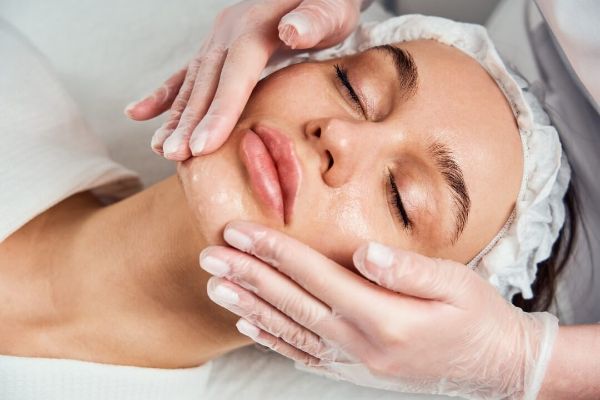
Effective Pigmentation Removal Techniques for Clear and Radiant Skin
Pigmentation concerns are among the most common skin issues faced today. With advancements in skin care technology, achieving clear and radiant skin has never been more accessible. Pigmentation removal treatment is designed to target dark spots, uneven skin tone, and other discolorations. This article dives deep into the most effective techniques to help you achieve a smooth and glowing complexion.
Causes of Pigmentation on the Skin
Pigmentation can be caused by several factors, each leading to different forms of discoloration. Understanding the root cause is essential to choosing the right pigmentation removal treatment. Below are some of the main culprits behind pigmentation:
Sun Damage
Sun exposure is a leading cause of pigmentation, commonly referred to as sun spots or age spots. These spots occur when the skin produces excess melanin in response to UV exposure, leading to dark patches on areas such as the face, hands, and shoulders.
Treatments for Sun-Induced Pigmentation
For sun damage-related pigmentation, laser treatments are particularly effective. Pico Laser is one of the top choices for this type of pigmentation. It works by emitting ultra-short pulses of laser energy that break down the pigmentation into tiny particles, which are naturally cleared away by the body.
Chemical peels, especially those with glycolic acid or salicylic acid, can help exfoliate the damaged outer layer of the skin, revealing fresher, brighter skin underneath. These peels also promote skin cell turnover, reducing the appearance of pigmentation over time.
Hormonal Changes
Hormonal fluctuations, particularly during pregnancy, can lead to melasma. This condition results in large, brown patches of skin, typically on the face. Birth control pills and hormone replacement therapy can also trigger melasma.
Treatments for Hormonal Pigmentation
Hormonal pigmentation like melasma is more stubborn to treat. Pico Laser is highly recommended for its precision in targeting and breaking down pigmentation without damaging surrounding skin tissue. Unlike traditional lasers, Pico Laser requires fewer sessions and has minimal downtime.
Topical creams containing hydroquinone and retinoids are also effective in managing hormonal pigmentation. These creams lighten the dark patches and promote the regeneration of new, unblemished skin. Consistent use is key, but results can be seen within a few weeks.

Post-Inflammatory Hyperpigmentation (PIH)
After an injury, acne breakout, or skin irritation, post-inflammatory hyperpigmentation (PIH) may appear as darkened patches. PIH is common among individuals with darker skin tones and can linger long after the initial injury has healed.
Treatments for Post-Inflammatory Hyperpigmentation
To tackle PIH, Pico Laser remains one of the most effective treatments due to its ability to address pigmentation at multiple depths. This laser technology targets the pigmented areas without causing further trauma to the skin, making it ideal for sensitive skin types.
Topical treatments such as azelaic acid and vitamin C serums also work well in fading PIH. These ingredients brighten the skin by inhibiting melanin production and promoting skin renewal. Regular application ensures a gradual but noticeable improvement in skin tone.
Aging and Genetics
Genetics can also play a significant role in pigmentation. Some individuals are genetically predisposed to develop freckles, age spots, or other forms of pigmentation. As the skin ages, pigmentation can worsen due to a slowdown in skin cell turnover and cumulative sun exposure.
Treatments for Age-Related Pigmentation
For age-related pigmentation, fractional CO2 lasers provide excellent results. These lasers work by creating micro-injuries in the skin to stimulate collagen production and accelerate skin cell turnover. As new skin cells replace the old ones, pigmentation naturally fades.
Topical antioxidants, such as niacinamide and green tea extract, help protect the skin from further damage and promote a more even skin tone. These treatments, combined with diligent sun protection, can help keep pigmentation under control as you age.
How Pigmentation Removal Treatments Work
The efficacy of pigmentation removal treatments depends on their ability to break down and clear excess melanin in the skin. Here’s a closer look at how some of the most popular treatments work:
Laser Treatments (Pico Laser)
Pico Laser is the most advanced option for pigmentation removal treatment. Unlike traditional lasers, which heat the skin, Pico Laser uses ultra-short pulses of energy to shatter the pigment particles. These tiny particles are then absorbed and naturally cleared away by the body. Since the treatment targets only the pigmentation, the surrounding skin remains unharmed, making it suitable for various skin types. Pico Laser is particularly effective for deep-rooted pigmentation such as melasma and sun spots.
Chemical Peels
Chemical peels involve applying a solution to the skin that causes the outermost layer to peel off, revealing fresher skin beneath. Depending on the depth of the peel, they can treat superficial to moderate pigmentation. Alpha hydroxy acids (AHAs) and beta hydroxy acids (BHAs) are commonly used to slough off dead skin cells and stimulate new skin growth. Chemical peels are often combined with other treatments for enhanced results.
Topical Lightening Agents
Many topical treatments, such as creams and serums, contain active ingredients that inhibit melanin production. Hydroquinone, a powerful skin lightener, works by disrupting the production of pigment and is often used in combination with retinoids and corticosteroids to increase efficacy. Vitamin C and niacinamide are also popular options for brightening the skin and reducing dark spots over time.
Microdermabrasion
Microdermabrasion is a non-invasive treatment that uses a fine abrasive tip to exfoliate the surface layer of the skin. By removing dead skin cells, it helps fade superficial pigmentation and stimulates collagen production, leading to a more even skin tone. However, it may not be as effective for deeper pigmentation issues like melasma.
What to Remember for Pigmentation Removal Treatments
While pigmentation removal treatments can deliver impressive results, it’s important to keep a few things in mind to maximize effectiveness and maintain results:
- Consistency is key – Pigmentation takes time to form, and it can take several sessions and months of consistent treatment to see significant improvement.
- Sun protection is crucial – UV exposure can reverse the progress of pigmentation treatments, so using sunscreen with a high SPF is essential for protecting your skin.
- Combining treatments often yields better results – Using multiple treatments, such as combining Pico Laser with topical creams, can accelerate the fading process and improve overall skin tone.
- Patience is required – Pigmentation doesn’t disappear overnight. Results are gradual, and you may need several treatment sessions, depending on the severity of your pigmentation.
Conclusion
Pigmentation removal treatment has evolved significantly, with advanced options like Pico Laser leading the way. Whether caused by sun damage, hormonal changes, aging, or post-inflammatory hyperpigmentation, there are effective solutions available. By understanding the different causes of pigmentation and exploring tailored treatments, you can achieve clear, radiant skin. Regular maintenance, sun protection, and consistency are key to long-lasting results.



